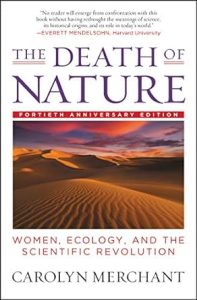From The Death of Nature: Women, Ecology, and the Scientific Revolution, by Carolyn Merchant, p. 16:
In the sixteenth century, the marriage and impregnation of the female earth by the higher celestial masculine heavens was a stock description of biological generation in nature. The movements of the celestial heavens produced semen, which fell in the form of dew and rain on the receptive female earth. A famous passage in On the Revolutions of the Celestial Spheres (1543) by Nicolaus Copernicus (1473-1543), reviver of the heliocentric hypothesis, draws on the marriage of the masculine heavens with the female earth: “Meanwhile, the earth conceives by the sun and becomes pregnant with annual offspring.”
And from page 25:
In his De Rerum Natura of 1565, the Italian philosopher Bernardino Telesio who referred to the marriage of the two great male and female powers: “We can see that the sky and the earth are not merely large parts of the world universe, but are of primary—even principal rank…. They are like mother and father to all the others.” The earth and the sun served as mother and father to the whole of creation: all things are “made of earth by the sun and that in the constitution of all things the earth and the sun enter respectively as mother and father.”


